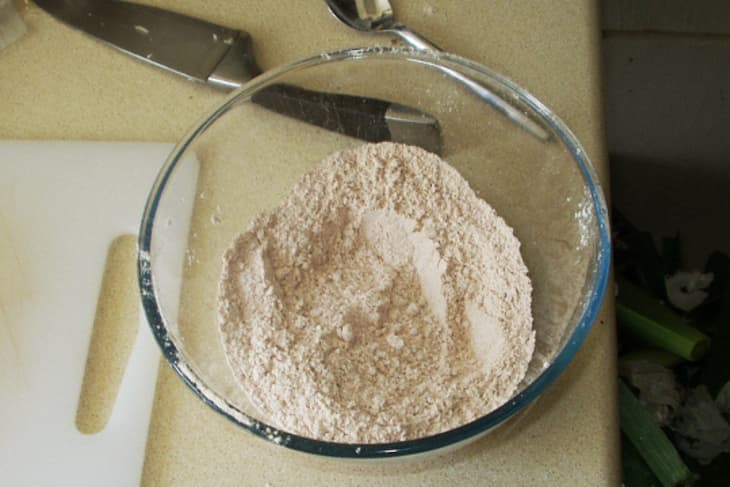Food Science: Why Some Flour Gets Bleached and Bromated
After listening to Evan Kleinman’s talk with Cindy Mushet about flour on the Good Food show this past week, we were left thinking about bleached and unbleached flour. Mushet is insistent that unbleached flour is best, and that made us wonder why it started getting bleached in the first place…
Fresh flour straight from the mill isn’t actually quite ready to be used in baking and actually improves with a little aging. Harold McGee of On Food and Cookign explains that during the aging time, flour undergoes a chemical process where oxygen in the air reacts with the glutenin proteins (which eventually work to form gluten) to form even longer chains of gluten. This means that doughs made with aged flour will have more elasticity and structure.
Fresh flour is also slightly yellowish to start off with, but then becomes paler as pigments in the flour oxidize during aging. The color change doesn’t affect anything chemically within the flour, but was originally an indicator that the flour had been aged for a certain period.
Around the beginning of the 20th century, it became common to use certain chemicals to speed up the aging process, allowing milling facilities to produce more flour and save on storage space. Potassium bromate was commonly used to speed aging, and then bleaches like benzoil peroxide and chlorine dioxide were used to approximate the whiteness of naturally aged flour.
In more recent history, medical concerns have risen over the consumption of potassium bromate, so it has been mostly replaced with ascorbic acid. Although bleaching hasn’t been raised into question medically, it does seem to affect the structure and flavor of the flour itself. As Cindy Mushet explained in her interview on Good Food, this makes bleached flour generally less ideal in her opinion.
What do you think – does bleached or unbleached flour make a difference to you?
(Image: Flickr member rjw1 licensed under Creative Commons)
